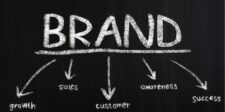Conscious marketing aims to bring authenticity and human goodness back into marketing. Depending on who’s asked, people who practice the idea generally think about current marketing (digital or traditional) slightly differently. Some believe that the marketing industry is broken, and consumers are tired of constant interruptions, mass marketing media, and manipulation. Others feel current marketing does absolutely no good to humanity and must be replaced with something better.
What is Conscious Marketing?
Regardless of why a marketer decides to practice conscious marketing, the constant themes are authenticity and human good. George Kao, a marketer and business coach, says the following in a video, defining it.
“Being present in the world in a way that serves the world and serves the mission of your business. To do marketing strategically and yet not violate your higher values. Truly, to integrate love and honesty and generosity and compassion and spirituality into your marketing.”
In an interview with Marketing Smarts, Nichole Kelly, the Chief Consciousness Officer at the Conscious Marketing Institute, defines conscious marketing as follows.
“For me, conscious marketing means marketing with the intention of raising the vibration of our planet and, essentially, how people feel.”
These definitions follow the themes of being authentic and human goodness – championing genuineness, trustworthiness, truth, and responsibility. Many of us would probably agree that if more marketers adopted conscious marketing, the world would be a better place.
For this author, conscious marketing means doing marketing in a way that is not harmful to others, is generous and genuine, and aligns consumer needs with business goals. Both consumer and business needs are equally important – reaching a middle ground in that regard is part of what makes marketing campaigns successful.
Consumers Already Have It
The great news is that many marketers already practice most if not all, the concepts of conscious marketing through inbound and content marketing. To illustrate that point, here are the main concepts behind conscious marketing.
- It puts the customer’s needs and desires first, ensuring every purchase is in their best interest.
- It aims to provide a win-win scenario for both the business and the customer.
- It demands that we care about our customers beyond the sale and maintain a positive purpose for marketing.
- It doesn’t make outrageous promises, only the ones that the company can fulfill.
- It focuses on helping customers make informed decisions about products instead of only pushing the sale.
- It provides valuable information to consumers based on what the audience wants to see.
- It doesn’t interrupt the customer and meets them when they need the information or product.
All of those ideas are practiced within inbound marketing and content marketing. Both disciplines are similar and focus on attracting customers to a business through valuable content and experiences.
Content marketing focuses on content creation and distribution. Inbound marketing encompasses everything – building the website, content creation, landing page optimization, and SEO (search engine optimization).
It’s No Secret That Marketing Has A Few Bad Apples
Every industry has misfits. Some marketers apply damaging manipulation tactics in marketing, and such an approach affects the industry as a whole. Consumers generally want to do business with ethical and honest companies that truly care about serving them, not only their pockets.
However, for more marketers to practice consciousness with their marketing tactics, a paradigm shift is necessary, and it starts at the top because leaders shape organizations.
Becoming more actively conscious about marketing can improve customer relationships, sustainability, and profitability. In one study by Accenture, 63 percent of surveyed recipients preferred to buy from purpose-led or driven companies. When businesses conduct marketing consciously, customers can more easily connect with them emotionally.
Socially Conscious Marketing Is Different
Conscious marketing shouldn’t be confused with socially conscious marketing. The latter strives to tackle larger political and social issues or debates – something that, for the most part, companies avoid since lots of things can go wrong. Gillette’s ad campaign, The Best Men Can Be, is one example of socially conscious marketing. Another example is 84 Lumber’s 2017 Superbowl spot, The Entire Journey.
Conscious marketing takes a different approach to impacting communities. One example is Tide’s “Loads of Hope” program. The company acts as a first responder in crisis times, providing clean clothes to communities through mobile laundromats. Tide also has a Loads of Hope clothing drive, where they collect, renew, and distribute donated clothing to people in need.
This allows Tide to emotionally connect with consumers, showing them that they care and stand for more than profit.
Is It the Future?
More brands should become more actively conscious of how marketing strategies and tactics are applied. However, it’s unlikely that many organizations will shift to conscious marketing. That’s because while it offers powerful benefits, companies are already getting those benefits through applying inbound or content marketing principles.
Conscious marketing prioritizes the emotional aspects of marketing as it relates to consumers and marketers striving to do good for society. It takes consciousness from only being a mental state into a more active state for companies. Doing impactful things with our consciousness is what it strives to help us achieve, and that’s a good thing. Where things can go wrong is thinking that persuasion isn’t necessary to move consumers towards making decisions. Persuasion will always matter and continue to drive marketing for many years. However, pressure and manipulation are not necessary to achieve business outcomes when the product is great. Good products sell.

I’m a freelance copywriter and SEO specialist. I aim to empower individuals and businesses with impactful marketing solutions and insights. In my downtime, I recharge by embracing the beauty of nature or cherishing moments with my loved ones. If you found value in this post, please consider sharing it.
Want a heads-up once a week whenever a new article drops?







